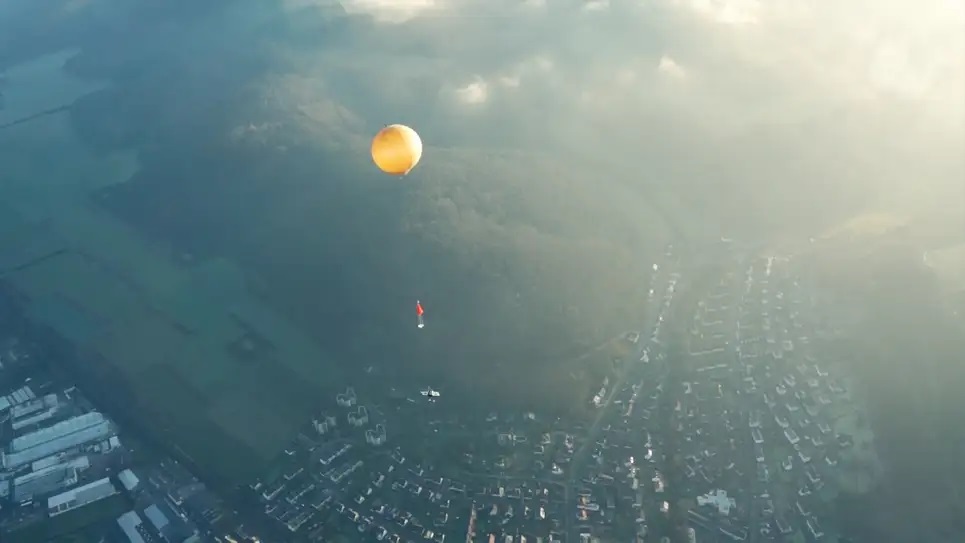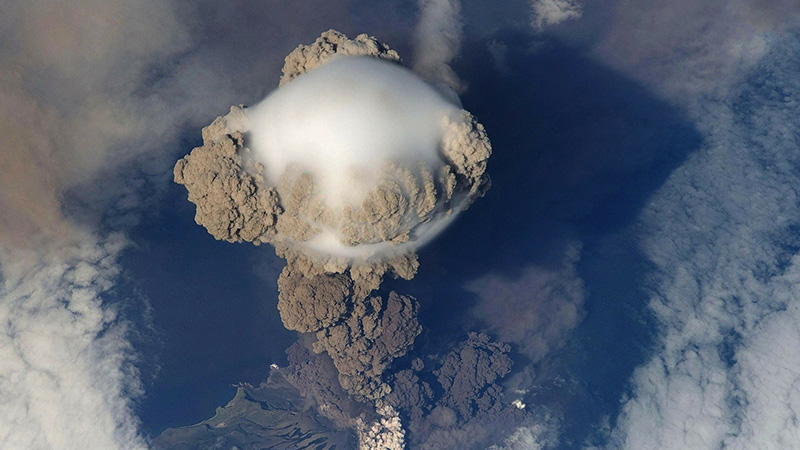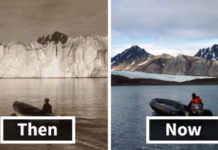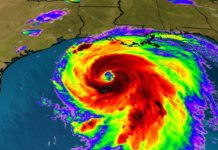Cover photo: Some geoengineering proposals take their cue from volcano eruptions, which can lead to cooling as ash is pumped into the atmosphere to deflect the sun’s rays (Image: Pixabay)
A startup company says it has begun releasing sulfur particles into the Earth’s atmosphere in a controversial attempt to combat climate change by deflecting sunlight.
Make Sunsets, a company that sells “cooling credits” for $10 apiece, is betting on solar geoengineering to cool the planet and fill its coffers. The startup claims it has already launched two test balloons, each filled with about 10 grams of sulfur particles and destined for the stratosphere, according to the company’s website, first reported by MIT Technology Review.

The concept of solar geoengineering is simple: add reflective particles to the upper atmosphere to reduce the amount of sunlight entering from space and thus cool the Earth. This idea was inspired by the atmospheric side effects of large volcanic eruptions that have caused drastic, temporary climate changes several times throughout history, including the infamous “year without a summer” of 1816.
However, implementing this idea effectively and safely is far less straightforward. Scientists and engineers have been studying solar geoengineering as a potential remedy for climate change for more than 50 years. However, because of the risks involved, such as rapid changes in precipitation patterns on our planet, damage to the ozone layer, and significant geopolitical implications, almost no one has conducted real experiments.
Make Sunsets did not respond to an email requesting comment on this article.
SHORT DIGRESSION: CONDENSATION TRAILS OR CHEMTRAILS – DO THEY REALLY EXIST OR NOT?

Let’s just take a look at an excerpt from an article in the German science magazine QUARKS “Kondensstreifen oder Chemtrails – werden wir manipuliert?” (Contrails or chemtrails – are we being manipulated?), which clearly answers this question: “Occasionally, this does indeed exist: measures that can (and should) influence the weather locally. For example, airplanes distribute silver iodide smoke to “inoculate” clouds – so that, for example, less hail occurs and the harvest is protected. A similar technique is also said to have been used at the Olympic Games in China, for example, so that the competitions could take place without rain. However, such measures are at best suitable for small-scale, regional applications. The effectiveness of this method has not yet been scientifically proven.”
DOES THE STARTUP MAKE SUNSETS REALLY DO GEOENGINEERING?
Oddly enough, the word “really” is put in quotation marks when it says they are “really effective.”
The startup claims that one gram of its clouds can offset the warming caused by one ton of carbon dioxide emissions in a year.
It also says that after three years, the clouds settle back to earth as compost. Make Sunsets claims that each $1 billion worth of clouds could cool the world by about 0.1°F.
The website does not specify what chemicals are used to create reflective clouds. However, according to an MIT Technology Review article, Make Sunsets uses sulfur and similar particles.
The publication also cited potential investors and customers who reportedly said the startup’s proposals were not part of a serious scientific effort or a credible venture.
Rather, it looked more like an attention-grabber designed to stir controversy. MIT spoke with Luke Iseman, co-founder and CEO, who confirmed that Make Sunsets is an act of geoengineering activism.
Iseman hopes that stirring up controversy could force science to solve the growing threat of climate change.
“In my opinion, it’s morally wrong if we don’t,” he says. However, Iseman says, it is important “that we do it as quickly and safely as possible.”
What are the problems with Make Sunsets?
Many scientists have spoken out against Luke Iseman’s latest project. Shuchi Talati, scholar at American University, for example, said it could limit or prevent geoengineering research.
According to MIT Technology Review, Make Sunsets is behaving like a “rogue” actor. Make Sunsets has no particular knowledge of atmospheric research or its potential impact on the atmosphere.
Releasing its reflective clouds into the atmosphere could have unintended consequences. Public outcry could force lawmakers to ban research on such a method.
Moreover, Talati believes it is hypocritical for the startup to claim it is pursuing humanitarian goals. After all, Make Sunsets conducts projects without meaningful consultation with those affected.
She says, “They are violating the rights of communities to determine their own future.”
Geoengineering will almost certainly be part of future climate efforts, whether all the experts go along or not. The Biden administration officially approved research funding for solar geoengineering earlier this year. And as the consequences of unchecked climate change accelerate, the idea has moved from the realm of speculation and science fiction into mainstream discussion. However, to prevent solar geoengineering from becoming another man-made climate catastrophe, this strategy needs much more intensive (and careful) research.
The solution to climate change almost certainly does not lie in a single outsider “disrupting” the composition of Earth’s stratosphere. But that hasn’t stopped Make Sunsets from reportedly raising nearly $750,000 in funding from venture capital firms. And for just $29,250,000 more per year, the company claims it can completely offset current warming. It’s a bet we don’t recommend.
Sources:
https://gizmodo.com/make-sunsets-solar-geoengineering-sulfur-climate-change-1849931460
https://www.climatechangenews.com/2019/02/26/swiss-push-talk-geoengineering-goes-sci-fi-reality/
https://www.quarks.de/umwelt/klimawandel/kondensstreifen-oder-chemtrails-werden-wir-manipuliert/






